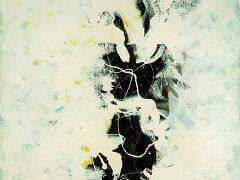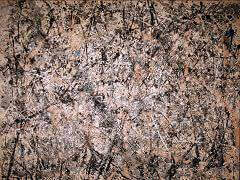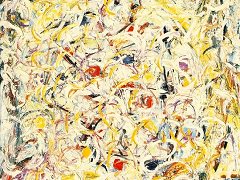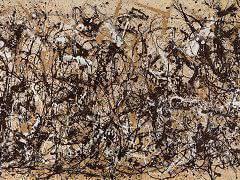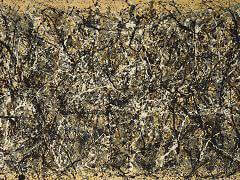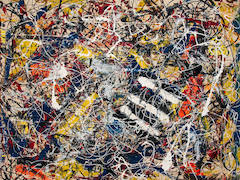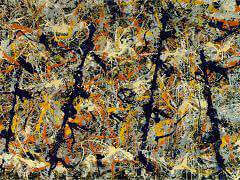Stenographic Figure, 1943 by Jackson Pollock
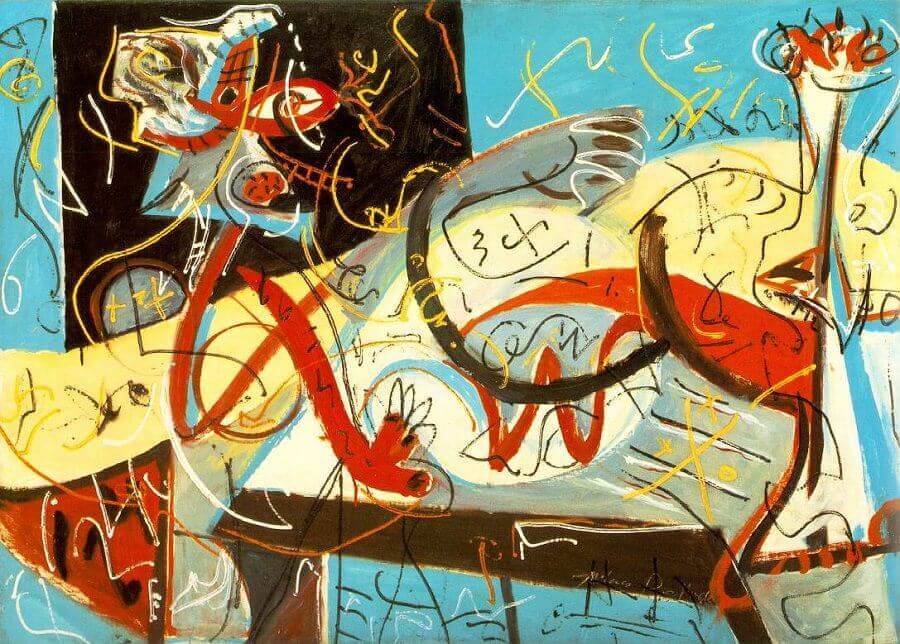
Stenographic Figure was created by Jackson Pollock in 1943. At least one important critics Robert Coates recognized the revolutionary nature of Stenographic Figure, and he concluded in "The New Yorker" that "In Jackson Pollock's Stenographic Figure, with its curious reminiscences of both Matisse and Miro, we have a real discovery."
Coates was right on the mark in looking for the genesis of Stenographic Figure in advanced European art; however, its composition more closely resembled an amalgam of Picasso and
Joan Miro, rather than Joan Miro and Henri Matisse, although some subtle echoes of the latter may be recognized - perhaps in the change in his
general color scheme away from the turgid browns and reds, or too-bright yellows and oranges that had predominated in his palette for the past seven or eight years. In Stenographic Figure, these have been replaced by
mauves, more saturated reds, and an almost turquoise blue that mixes into the figure and also forms the background.
Before 1942-43, Jackson Pollock was not at all interested in the works of Henri Matisse, although his wife Krasner had admired matisse ever since her stint, in the late 1920s, as a student at the conservative National Academy of
Design. Despite his denigration by her academy teachers, while haunting the galleries of the newly opened Museum of Modern Art, Krasner had discovered the pictorial power of Matisse's high-keyed
palette and decorative sinuosity. This aroused a passion for the Fauvist painting style which remained with her throughout her life. What Krasner so admired in Matisse the artist himself had articulated in 1908 in his "Notes of a
Painter": "I am unable to distinguish between the feeling I have for life and my way of expressing it." Matisse continued, "The whole arrangement of my picture is expressive. The place occupied by figures or objects, the empty
spaces around them, the proportions, everything plays a part." Pollock's similar attitude toward composition, in addition to his newly heightened color sense, may have reminded Robert Coates of Matisse; the only influence Krasner
would ever admit to having had on Pollock was to have made him more aware of the contributions of Matisse.



